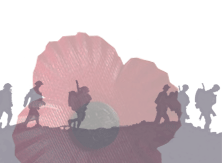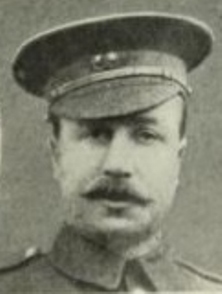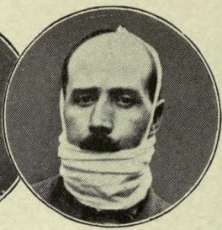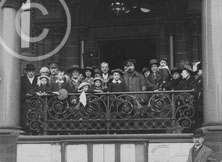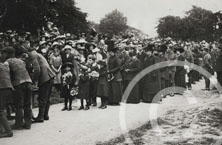William Young VC
Their names will be remembered for evermoreWhen Mary Young asked her husband William if he had not thought it silly, considering he had nine children, to risk his life saving a wounded sergeant, he could not speak his answer. With his jaws shattered and bound with bandages, he wrote: "I would do it again." He later told an interviewer that his actions amounted to "really only about half an hour's work and I don't want a lot said about it." He didn't get a choice in the matter, when his home town turned out to celebrate a hero who waded through mud with an officer on his back. Considerable Injuries Earlier Young had already suffered considerable injuries during service. He was wounded in the thigh during the first Battle of Ypres in November 1914, and spent nine weeks in hospital before returning to the trenches. In September 1915 his eyes were badly damaged during a gas attack, and he spent another three weeks in hospital. Despite all this, and nearing age 40, he returned to the trenches. Three days before Christmas 1915, he had been transferred to the 8th Battalion, The East Lancashire Regiment, which occupied trenches designated a "quiet sector" near Arras. Even so, bombing raids and artillery exchange took place with the German lines 400 yards away. After some fighting, Young had noticed his sergeant lying wounded, 150 yards away. Later, in hospital, he described what happened. "I went out to him, Sergeant Walter Allen, a golf professional. I carried him partly on my back and returned to the trench. The mud was so deep, nearly to one's knees, and the Germans were sniping all the time. Was it daylight? Oh yes, in the daytime. I felt the wounds but none of them knocked me over." Sergeant's Order to Return to Safety Ignored In fact, both his jaws had been shattered and he was shot in the shoulder and chest. The sergeant had told him to return to safety, but Young had refused. His interviewer persisted that he must have lost a lot of blood. Young replied: "Yes but I was a strongish chap. At the dressing room they did seem to think it impossible I could have walked." He had walked a mile to the treatment station unaided. Young, who was born in Maryhill of Irish immigrants, lived in Edinburgh and Greenock, then Govan. By 14 he was a railway labourer and the family moved to Ayrshire. In 1899 he moved to Preston and joined the 1st Battalion, The East Lancashire Regiment. He served in the Boer War in South Africa. He returned to Preston in 1902 and married Mary, joining the army reserves and resuming work as a labourer. Despite his age, 38, he was mobilised with his regiment immediately war broke out. A Heart-breaking Procession Five months later, in August 1916, he returned to military hospital for another operation, but died under anaesthetic. The military escorts who had taken him jubilantly through the streets that spring this time pulled his coffin, on a gun carriage. The procession again included the mayor and other dignitaries. Also present were his wife and his children, lined up "like steps" and weeping at his graveside, as a heart-breaking photograph shows. Thousands of mourners watched as Young was laid to rest, a Glasgow boy in Preston's New Hall Lane Cemetery. William Young's citation in The London Gazette View original referenced text here: |
Images:
|






